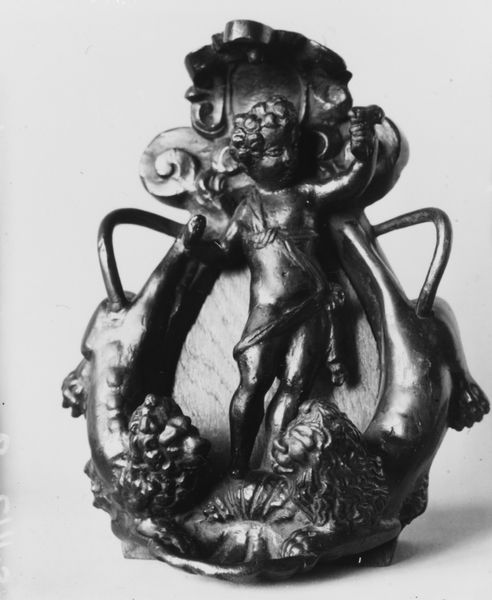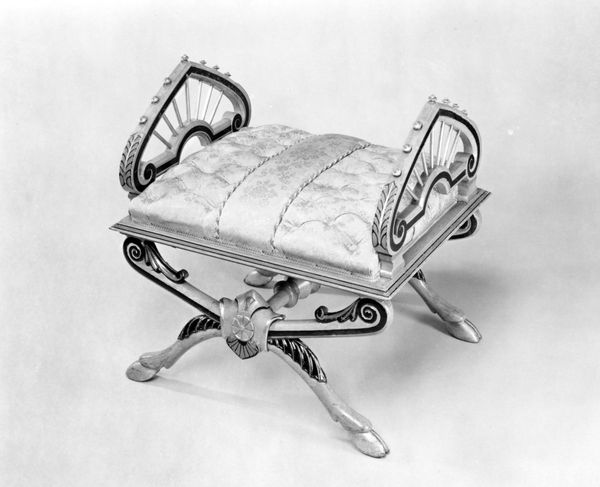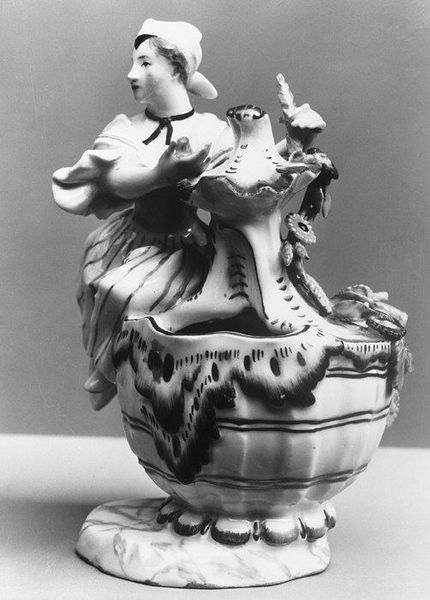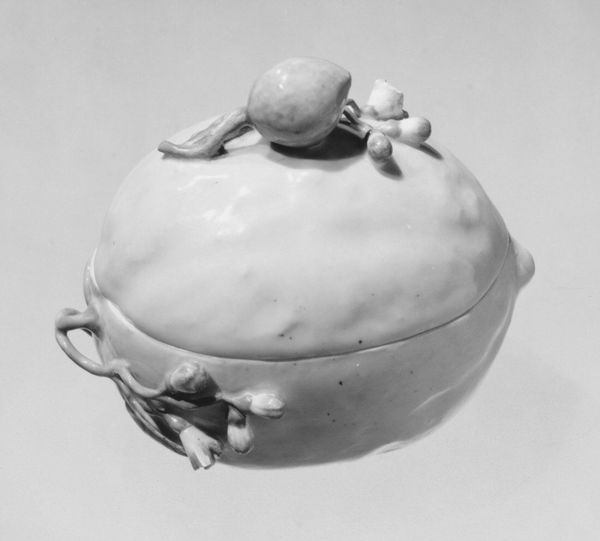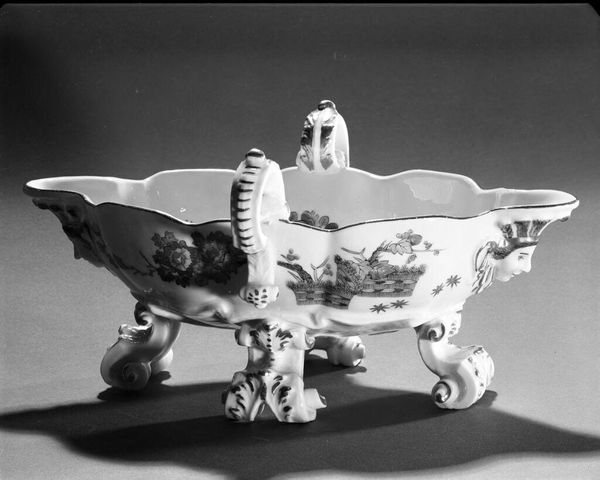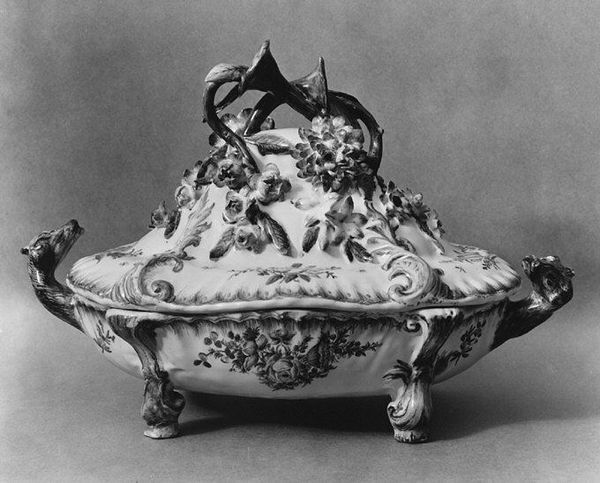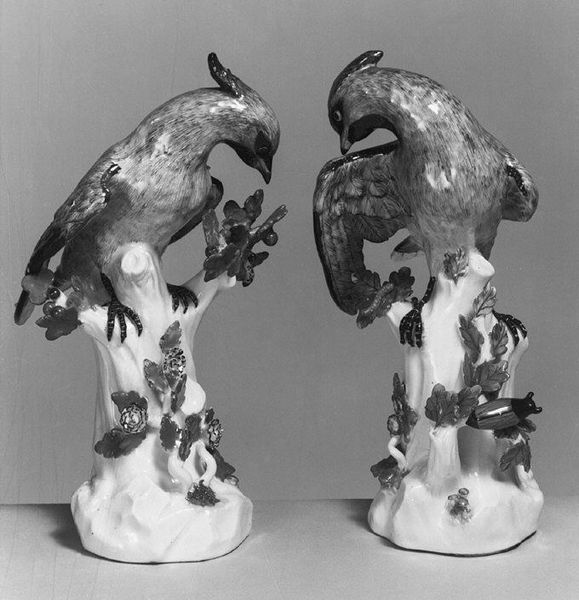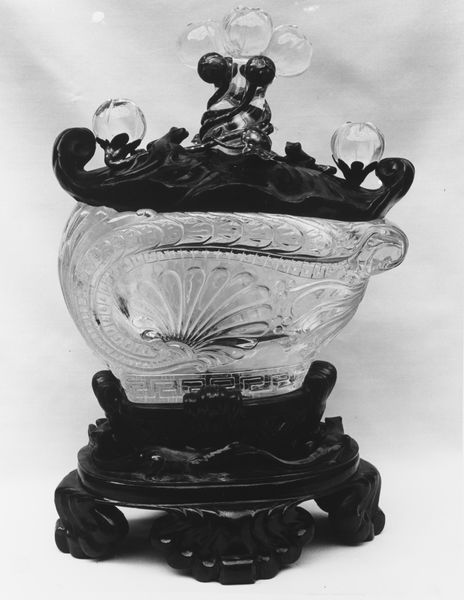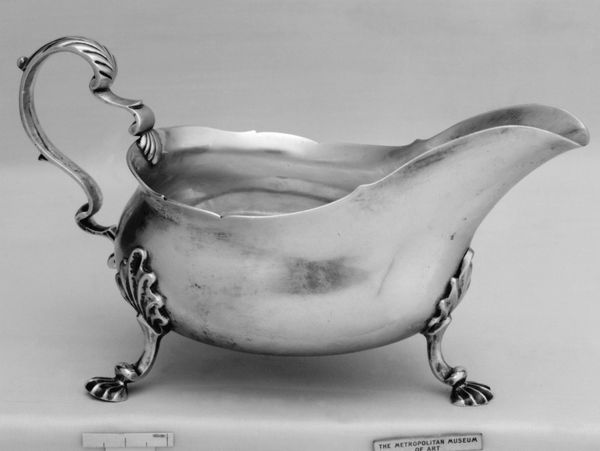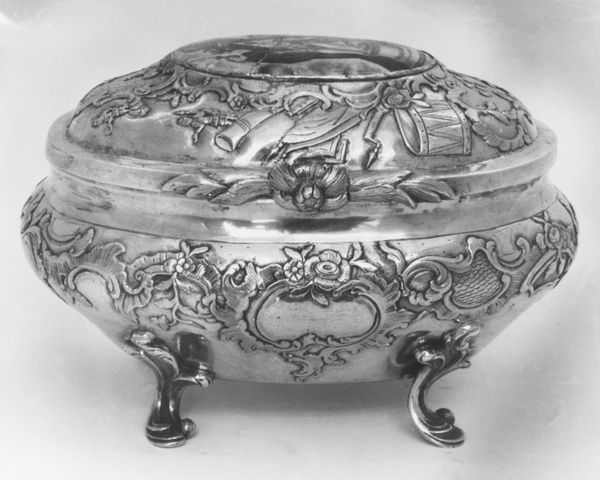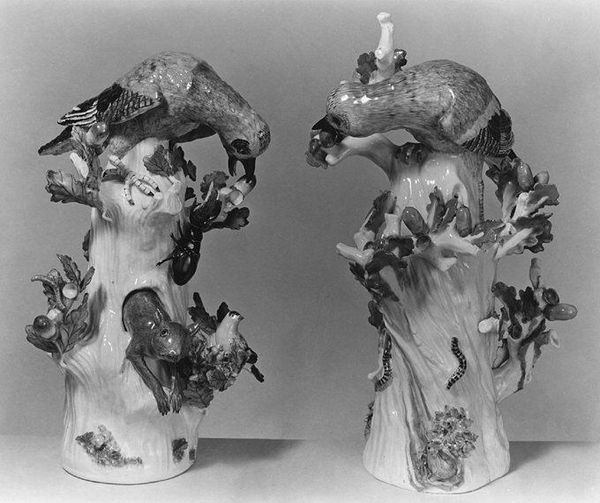
silver, metal, sculpture
#
silver
#
baroque
#
metal
#
sculpture
#
figuration
#
sculpture
#
decorative-art
#
rococo
Copyright: Public Domain
Curator: This silver brazier, crafted by Charles Frederich Kandler around 1730 to 1740, exemplifies the Baroque fascination with ornate details. It really makes you wonder about its function and the world it inhabited, doesn't it? Editor: Absolutely! I find myself drawn to the fantastical elements, the dragon supports, and wondering who would have owned and used such an extravagant object. How do you read this piece, particularly in terms of its materiality and function? Curator: Well, let’s think about the process involved in its creation. The silver, sourced likely through exploitative colonial practices, then meticulously crafted by skilled artisans, perhaps even under a guild system regulating labor and production standards. How does that sit with you, when viewing its ornamental excess? Editor: That contrast is really striking – the beautiful, elaborate design concealing a more complex and potentially exploitative history of labor and material acquisition. Curator: Precisely! The Brazier was not merely decorative but a tool for heating. So what does its lavishness say about consumption habits, wealth display, and the social status of its owner? Did its purpose justify the materials or the process to create it? Editor: It seems to underscore the power dynamics of the time - wealth flaunted through intricate craftsmanship made possible by global trade and labor practices. Curator: Exactly! These functional pieces became sites where labor, material wealth, and societal power were condensed into ornate statements. How can that help us consider our current use of rare materials today? Editor: Thinking about it that way really opens up the object. It isn't just a pretty object; it represents production chains and a material record of 18th-century social structures and cultural values. Curator: It forces us to look beyond aesthetics and consider the social and economic contexts embedded in even the most ornamental works. A great discussion!
Comments
No comments
Be the first to comment and join the conversation on the ultimate creative platform.
